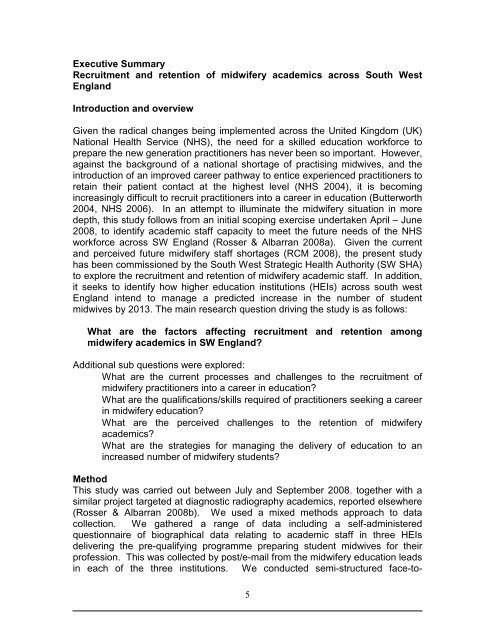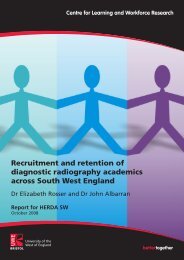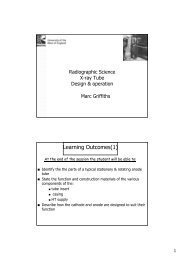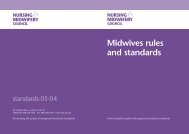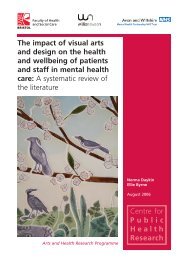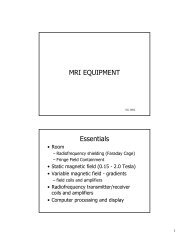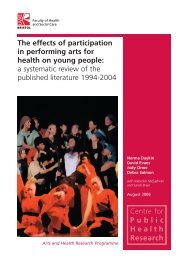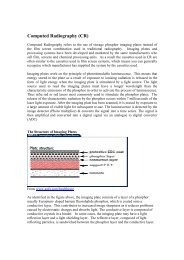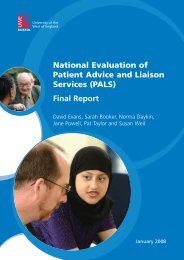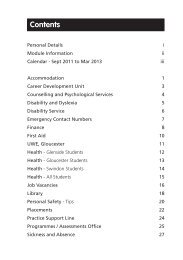Recruitment and retention of midwifery academics across South ...
Recruitment and retention of midwifery academics across South ...
Recruitment and retention of midwifery academics across South ...
- No tags were found...
Create successful ePaper yourself
Turn your PDF publications into a flip-book with our unique Google optimized e-Paper software.
Executive Summary<strong>Recruitment</strong> <strong>and</strong> <strong>retention</strong> <strong>of</strong> <strong>midwifery</strong> <strong>academics</strong> <strong>across</strong> <strong>South</strong> WestEngl<strong>and</strong>Introduction <strong>and</strong> overviewGiven the radical changes being implemented <strong>across</strong> the United Kingdom (UK)National Health Service (NHS), the need for a skilled education workforce toprepare the new generation practitioners has never been so important. However,against the background <strong>of</strong> a national shortage <strong>of</strong> practising midwives, <strong>and</strong> theintroduction <strong>of</strong> an improved career pathway to entice experienced practitioners toretain their patient contact at the highest level (NHS 2004), it is becomingincreasingly difficult to recruit practitioners into a career in education (Butterworth2004, NHS 2006). In an attempt to illuminate the <strong>midwifery</strong> situation in moredepth, this study follows from an initial scoping exercise undertaken April – June2008, to identify academic staff capacity to meet the future needs <strong>of</strong> the NHSworkforce <strong>across</strong> SW Engl<strong>and</strong> (Rosser & Albarran 2008a). Given the current<strong>and</strong> perceived future <strong>midwifery</strong> staff shortages (RCM 2008), the present studyhas been commissioned by the <strong>South</strong> West Strategic Health Authority (SW SHA)to explore the recruitment <strong>and</strong> <strong>retention</strong> <strong>of</strong> <strong>midwifery</strong> academic staff. In addition,it seeks to identify how higher education institutions (HEIs) <strong>across</strong> south westEngl<strong>and</strong> intend to manage a predicted increase in the number <strong>of</strong> studentmidwives by 2013. The main research question driving the study is as follows:What are the factors affecting recruitment <strong>and</strong> <strong>retention</strong> among<strong>midwifery</strong> <strong>academics</strong> in SW Engl<strong>and</strong>?Additional sub questions were explored:• What are the current processes <strong>and</strong> challenges to the recruitment <strong>of</strong><strong>midwifery</strong> practitioners into a career in education?• What are the qualifications/skills required <strong>of</strong> practitioners seeking a careerin <strong>midwifery</strong> education?• What are the perceived challenges to the <strong>retention</strong> <strong>of</strong> <strong>midwifery</strong><strong>academics</strong>?• What are the strategies for managing the delivery <strong>of</strong> education to anincreased number <strong>of</strong> <strong>midwifery</strong> students?MethodThis study was carried out between July <strong>and</strong> September 2008, together with asimilar project targeted at diagnostic radiography <strong>academics</strong>, reported elsewhere(Rosser & Albarran 2008b). We used a mixed methods approach to datacollection. We gathered a range <strong>of</strong> data including a self-administeredquestionnaire <strong>of</strong> biographical data relating to academic staff in three HEIsdelivering the pre-qualifying programme preparing student midwives for theirpr<strong>of</strong>ession. This was collected by post/e-mail from the <strong>midwifery</strong> education leadsin each <strong>of</strong> the three institutions. We conducted semi-structured face-to-5


